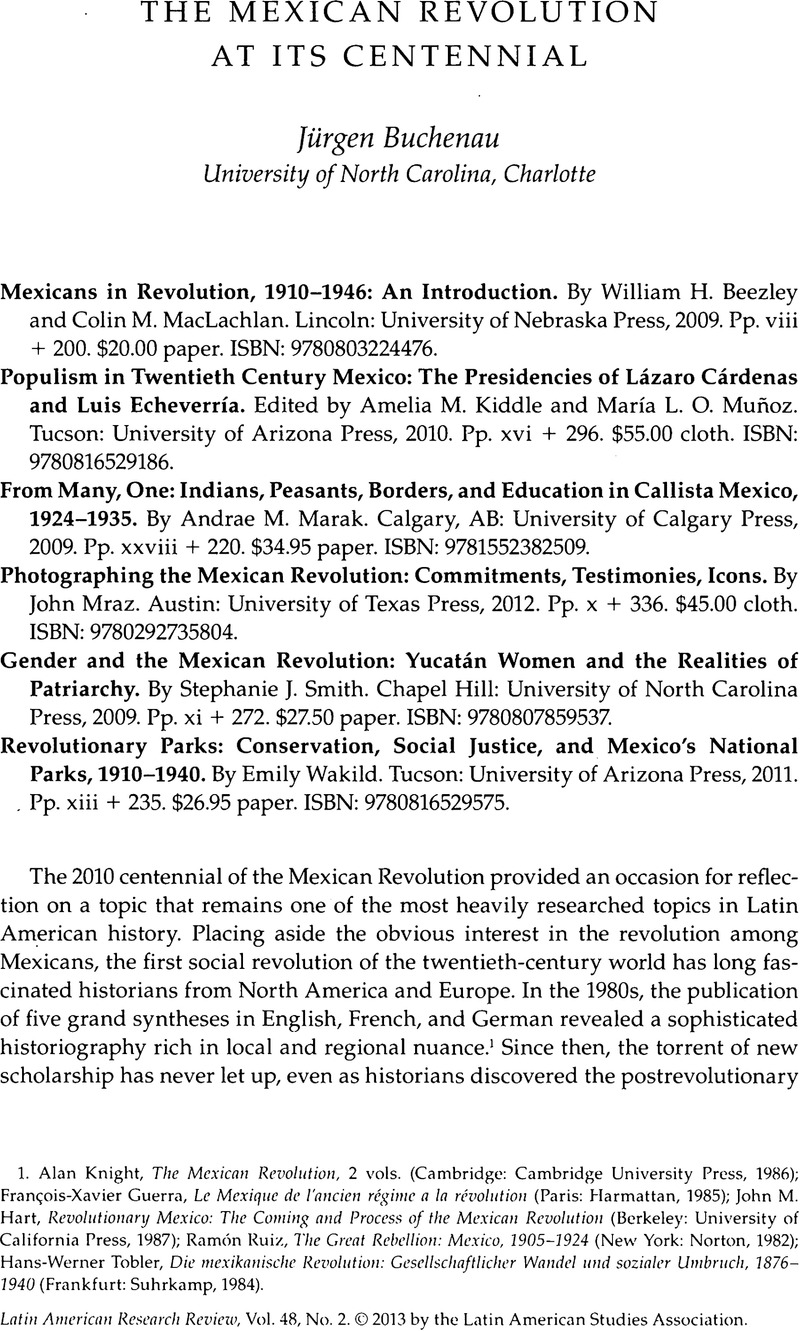No CrossRef data available.
Published online by Cambridge University Press: 05 September 2022

1. Alan Knight, The Mexican Revolution, 2 vols. (Cambridge: Cambridge University Press, 1986); François-Xavier Guerra, Le Mexique de l'ancien régime a la révolution (Paris: Harmattan, 1985); John M. Hart, Revolutionary Mexico: The Coming and Process of the Mexican Revolution (Berkeley: University of California Press, 1987); Ramón Ruiz, The Great Rebellion: Mexico, 1905–1924 (New York: Norton, 1982); Hans-Werner Tobler, Die mexikanische Revolution: Gesellschaftlicher Wandel und sozialer Umbruch, 1876–1940 (Frankfurt: Suhrkamp, 1984).
2. Mark Wasserman, “You Can Teach an Old Revolutionary Historiography New Tricks: Regions, Popular Movements, Culture, and Gender in Mexico, 1820–1940,” Latin American Research Review 43, no. 2 (2008): 260–271.
3. For full disclosure, I have an essay in this collection.
4. Friedrich Katz, The Life and Times of Pancho Villa (Stanford, CA: Stanford University Press, 1998); Jürgen Buchenau, Plutarco Elias Calles and the Mexican Revolution (Lanham, MD: Rowman and Littlefield, 2007).
5. For a similar periodization, see my Mexican Mosaic: A Brief History of Mexico (Wheeling, IL: Harlan Davidson, 2008).
6. Quoted in George W. Grayson, Mexico: Narco-Violence and a Failed State? (New York: Transaction Publishers, 2010), 42.
7. Lesley Byrd Simpson, Many Mexicos (New York: Putnam, 1941).
8. Mary Kay Vaughan, Cultural Politics in Revolution: Teachers, Peasants, and Schools in Mexico, 1930–1940 (Tucson: University of Arizona Press, 1998). See also Christopher R. Boyer, Becoming Campesinos: Politics, Identity, and Agrarian Struggle in Postrevolutionary Michoacán, 1920–1935 (Stanford, CA: Stanford University Press, 2003).
9. Gilbert M. Joseph, Revolution from Without: Yucatán, Mexico, and the United States, 1880–1940, 2nd ed. (1982; Durham, NC: Duke University Press, 2003), 105.
10. On environmental history, see, for example, Myrna I. Santiago, The Ecology of Oil: Environment, Labor, and the Mexican Revolution, 1900–1938 (Cambridge: Cambridge University Press, 2006); Christopher R. Boyer, ed., A Land between Waters: Environmental Histories of Modern Mexico (Tucson: University of Arizona Press, 2012). On architecture history, see Patrice Elizabeth Olsen, Artifacts of Revolution: Architecture, Society, and Politics in Mexico City, 1920–1940 (Lanham, MD: Rowman and Littlefield, 2008).